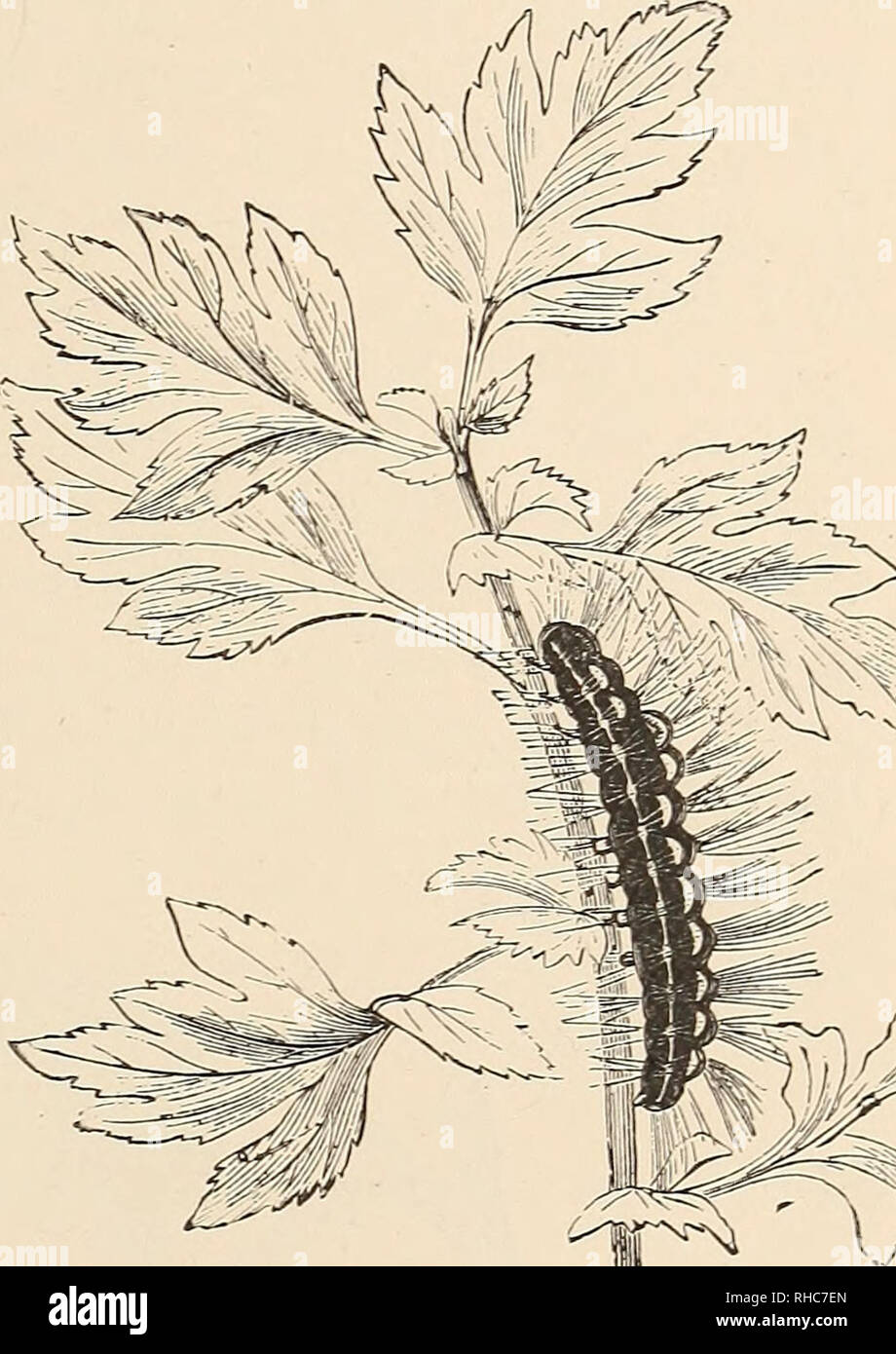. The Book of gardening; a handbook of horticulture. Gardening; Floriculture. ON ROSES. 127 larva of the Winter Moth is to a great extent kept in check by the Ichneumon flies, more than sixty species preying upon it. In certain seasons the very destructive caterpillar of the Gooseberry Moth, Abraxas grossulariata, will attack Rose trees, and practically defoliate them. Powdered hellebore should be dusted on the foliage. Hitherto all the moth caterpillars dealt with have been small and well concealed from sight. There are, however, to be enumerated several caterpillars of the larger moths well

Image details
Contributor:
Library Book Collection / Alamy Stock PhotoImage ID:
RHC7ENFile size:
7.1 MB (338.1 KB Compressed download)Releases:
Model - no | Property - noDo I need a release?Dimensions:
1330 x 1878 px | 22.5 x 31.8 cm | 8.9 x 12.5 inches | 150dpiMore information:
This image is a public domain image, which means either that copyright has expired in the image or the copyright holder has waived their copyright. Alamy charges you a fee for access to the high resolution copy of the image.
This image could have imperfections as it’s either historical or reportage.
. The Book of gardening; a handbook of horticulture. Gardening; Floriculture. ON ROSES. 127 larva of the Winter Moth is to a great extent kept in check by the Ichneumon flies, more than sixty species preying upon it. In certain seasons the very destructive caterpillar of the Gooseberry Moth, Abraxas grossulariata, will attack Rose trees, and practically defoliate them. Powdered hellebore should be dusted on the foliage. Hitherto all the moth caterpillars dealt with have been small and well concealed from sight. There are, however, to be enumerated several caterpillars of the larger moths well known to every gardener. They do not, however, select the Rose alone as a food-plant, but being practically omni- , it. This is a very voracious species, and would quickly defoliate a tree if present in any numbers. Like the last it is very hairy. It is grey, beautifully spotted with red, and edged with w^hite. On the second and twelfth, and fifth and sixth segments the hair-tufts are black; whereas those of the fifth and eighth are yellowish. Once seen the creature is hardly likely to be passed over for anything else. The Lackey Moth {Bombyx Neustria) caterpillar, another hairy species which is found upon many plants, but always an unde- sirable visitor, frequently affects Roses. It has a bluish-grey vorous, the plant occasionally is laid under contribution to provide them with food. One of these is the caterpillar of the Gold-Tail Moth (^Liparis similis) {aiirifiua). As will be seen by the illustration (Fig. 62), it is a strikingly-marked hairy creature. In colour it is black, with a red double dorsal line, red tubercles on the tenth and eleventh seg- ments, and some white marks in the sub-dorsal region. The Common Vapourer {Orgyia antiqua) is no less omnivorous, and quite as striking as the caterpillar just illustrated. It is also extremely common, almost every garden containing. Fig. 62.—Caterpillar of Liparis SIMILIS (Gold-Tail Moth).. Please note that these images are e